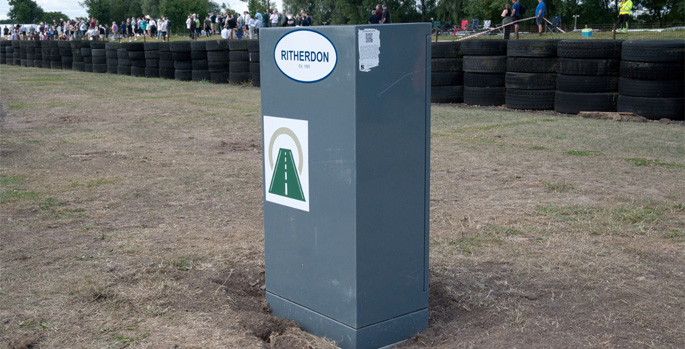Electrical enclosure specialist Ritherdon has launched what is thought to be the first passively safe roadside cabinet.
Developed for more than 13 years in collaboration with Manchester University’s School of Mechanical, Aeronautical and Civil Engineering, the cabinet has been tested to the specifications outlined in European standard EN 12767.
It is made from the same steel as Ritherdon’s traditional roadside cabinets and is installed the same way; however, it is not bolted to the ground but is instead attached to a spacer base with breakaway bolts which, if hit with enough force, sheer off.
Recent crash demonstrations at the Institute of Traffic Accident Investigators ITAI Crash Day 2025 in Derbyshire showed the ‘striking’ difference when a car hits the passively safe cabinet, which just 'shears away from the base'.
Crashes with traditional cabinets could seriously damage cars and injure passengers.
Managing director Ben Ritherdon said the ‘beauty’ of this cabinet is that it ‘does not replace traditional feeder cabinets’.
‘In many cases, such as alongside motorways and dual carriageways, where the speed limit is high, or along residential roads where speed limits are 20 or 30mph, traditional cabinets are ideal,’ he explained.
‘Where the passively safe cabinet shines is cases where a feeder pillar needs to be installed along country roads.
‘Instead of effectively having to build a layby, and protect drivers with a costly, and ugly, vehicle restraint system, a passively safe cabinet would be perfect.’
UK regulations regarding the installation of roadside cabinets state that if the road is over a certain speed for motorists, electrical cabinets need to be either set back from the road or be surrounded by a vehicle restraint system (VRS). This usually entails barriers being installed around the cabinet to protect drivers in the event of a crash.
Mr Ritherdon added: ‘The passively safe cabinet doesn’t need to be placed behind an expensive VRS, and it doesn’t need to be set back from the road – and drivers will be as protected as possible in the event of a collision.
‘Also, a single passively safe cabinet is much quicker and cheaper to replace than a standard cabinet and a VRS in the event of an accident.’






